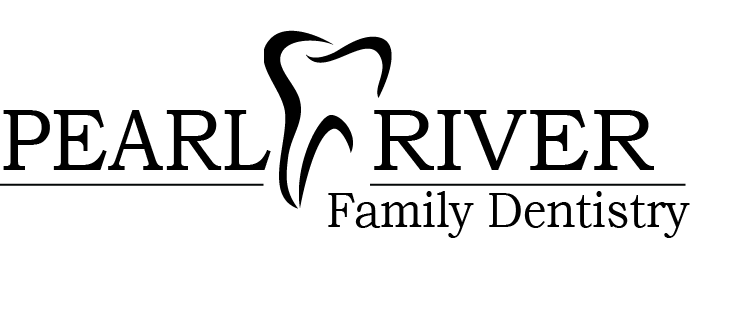You may not think about your temporomandibular joints (TMJ) much, but you use them a lot. The joints connect your jawbone to your skull. Your TMJ springs into action each time you talk, chew and swallow.
TMJ disorders occur when something goes wrong with your jaw joints and jaw muscles. Oftentimes, this happens because of a jaw injury, inflammation such as with arthritis, or overuse.
TMJ Pain
Temporomandibular Joint Dysfunction (TMJ) Disorder encompasses head, neck and facial pain, jaw dysfunction, and ear problems that affect a significant portion of the general population and masquerade as many other conditions. It is estimated that 700 million man-hours of work are lost each year as a result. In addition, it is conservatively estimated that $500 million dollars is spent on over-the-counter pain medications and $1.2 billion dollars on prescription pain management medications annually in the “management” of this pain and discomfort. With much frustration, patients often bounce from one medical doctor to another to find the source of their discomfort. Negative or inconclusive findings often lead to prolonged drug therapies, and often an ultimate and incorrect diagnosis of psychosomatic illness.
However, your “incurable” headache, ear and facial pain could be coming from jaw joints, your bite — how your teeth meet and/or spasms in your facial musculature. Our practice< approaches treatment and management of problems of this nature as a team with your physician to provide the most comprehensive solutions. We are committed to the long-term benefits of comprehensive neuromuscular treatment and enthusiastic about the options offered by the advanced technology that is part of the process.
Temporomandibular Joint Dysfunction Overview
TMJ refers to our left and right temporomandibular (jaw) joints. The acronym TMJ is very often incorrectly used to describe a disorder of these joints. However, the correct acronym of the disorder is TMD, meaning temporomandibular disorders. When we include the many symptoms of head, neck, facial, and jaw pain, the issue is recognized as “craniomandibular disorders“.
Long-term studies now prove that the following symptoms are linked to the incorrect alignment of the upper (maxilla) and lower (mandibular) jaws and changes in the integrity of the TMJ. This produces physiologic stress, pain and dysfunction in the joints, supporting ligaments and associated muscles. Left untreated, the problems progress, getting worse over time and the stress and tension it produces can cause everything from mild discomfort to severe chronic pain throughout the body.
Symptoms of craniomandibular and TMJ Disorders:
- Headaches
- Dizziness facial, neck, or back, pain
- Pain or soreness of the jaw joints clicking, popping, or grating sounds as jaw joints are in motion
- Congestion or stuffiness of the ears
- Numbness of the arms and fingers chipped, or cracked teeth
- Pain in teeth that seems to move around
- Loose teeth
- Ear pain
- Ear ringing/ buzzing sounds in the ear
- Loss of auditory acuity
- Limitations of motion of jaw joint
- Jaw locking upon opening or closing
- Tired face/jaw
- Snoring
- Difficulty swallowing
- Tingling fingers/hand numbness
Craniomandibular disorders can also exacerbate:
- Fibromyalgia
- Tinnitis
- Migraine
Causes
The factors responsible for craniomandibular disorders may be single or multifactorial. These include:
- Developmental– a malrelationship of the maxilla and mandible produces symptoms that may emerge during childhood or may not occur until adulthood after years of day to day trauma.
- Improper occlusion/bite– when teeth do not fit together properly it causes sustained microtrauma to the joints. Over time the body compensates by involving other muscles of the body
- Direct trauma to the jaw
- Indirect trauma to jaw– a significant number of cervical whiplash injuries are accompanied with mandibular whiplash — a stretching or tearing of the ligaments of the jaw joints and cause damage within the supporting musculature.
- Tooth Loss– losing teeth without adequate replacement results in a change in jaw position; improper restorations that change the jaw relationship or make an incorrect one worsen.
- Poor sleep habits/position
- Poor posture-places unnecessary wear and tear on all joints, including jaw joints and resulting damage, is similar to direct trauma
- Bruxism/clenching of teeth– some patients do this unconsciously and in some patients, we are uncertain why this is occurring. This produces stress on jaw joints and muscles of face and neck
- Sleep apnea-it is theorized that some patients clench and brux their teeth unconsciously to maintain the muscles of the throat and mouth in a patent open airway. This will help maintain an airway but will put stress on jaw joints and muscles of face.neck
- Stress– some patients unconsciously brux and or clench their teeth in response to increased stress
Craniomandibular Classifications
Craniomandibular disorders are classified as Intracapsular or Extracapsular
Intracapsular
Intracapsular Disorders are characterized by structural alterations in the joint itself. The normal physiologic relationship between the part of the lower jaw called the condyle, the disc that moves between it and the part of the skull called the fossa has been altered and compromised. This interferes with form and function and frequently produces pain.
Degenerative osteoarthritis, rheumatoid arthritis, and neoplasms are Intracapsular disease. Trauma induced to the joint directly or indirectly an intracapsular disorder can occur. A common problem is a slipped or dislocated disc of the jaw joint. Due to tearing or stretching of the disc and its attachments the disc assumes an abnormal position forward of the condyle instead of cushioning the condyle with the fossa. Opening movements produces a clicking sound as the disc slips back into the proper position (a process called disc reduction) momentarily over the condyle. Frequently upon closing, as the disc assumes its abnormal position and slips off the condyle forward of it click can be heard again. These clicks may be audible, but frequently require a stethoscope or sophisticated instrumentation to hear it.
If this anterior disc displacement is left untreated, it may ultimately result in “anterior disc displacement without reduction” meaning the disc never goes between the condyle and fossa. This causes limitations in movement laterally and opening and is called “closed lock” as the disc now acts a mechanical obstruction, getting in the way for normal condyle movement.
Long-term worsening frequently results in degenerative osteoarthritis producing severe alterations in form and function.
Most often internal/intracapsular problems/ derangements produce pain, often severe in the head — from the joint itself with or without referred pain to other areas of the head or muscle dysfunction such as spasm and myofascial trigger points.
Extracapsular
Extracapsular disorders occur when the musculature of the TMJ’s have an altered acquired postural rest position. Over a prolonged period of time, the muscles maintain themselves in an altered state of hyperfunction, which the brain perceives as an accommodated “balanced position.”
This change from a physiologic rest position to an accommodated rest position occurs when the mandibular trajectory of closure is not coincident with the TMJ/neuromuscular trajectory of closure. This trajectory is directly affected by how the teeth meet-their “occlusal relationship” and how their proprioceptive input causes a change in jaw position forcing muscles to function at less than their optimal lengths.
This all results in the musculature and TMJ’s existing in a “stressed” condition. The subjective symptoms are similar to Intracapsular problems, including joint pain, as well as muscle dysfunction, such as spasm and myofascial trigger points. No joint noises are found with extracapsular disorders.
A strong and direct biomechanical relationship exists between all the muscles of the head and neck. As a result of reciprocal muscle function, dysfunction and pain in the head and face muscles frequently result in dysfunction and pain in the cervical muscles — neck pain — that can eventually involve the whole upper back. Due to unbalanced posturing of muscles of the head neck and shoulders, these patients maintain what is called a forward head posture.
Neurologically there is a strong relationship between the head and neck muscles and the ear. Ear symptoms, including congestion, pain, buzzing, ringing, and even loss of hearing are frequently found in craniomandibular disorders.
Treatment for TMJ Disorders
Feel free to schedule an appointment with Pearl River Dental team to first diagnose your potential TMJ disorder and then fabricate a custom treatment plan using the latest technology and techniques available. Most times an orthotic device is fabricated, which varies on your specific diagnosis.
To make an appointment, or if you suspect you may have TMJ Disorder, call our office: 601-936-6161

